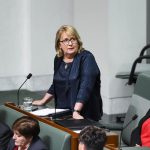Where does all the money go?
Sara Hudson | December 20, 2009
In the last 12 years, Commonwealth funding for Indigenous specific health programs has increased by 328% with no noticeable improvements in Indigenous health outcomes.
Aboriginal people living in remote and very remote communities continue to suffer from infectious diseases such as trachoma and rheumatic fever normally found only in Third World countries.
One of the reasons why increased funding has failed to make any significant inroads in closing the appalling health ‘gaps’ between Indigenous and non-Indigenous Australians, is that no one really knows where this money is going and what it is or is not achieving.
Funding for Indigenous health programs is lost in a maze of bureaucracy. In the 2009–10 Budget, funding is listed by program (or desired outcome) rather than by agency or portfolio, making it virtually impossible to determine how much money is coming from, or going to, each government department. Some programs have multiple agencies charged with delivering health services, so there is no way of assessing how that money is to be dispersed among the various government departments.
In an attempt to control where funding is going and to provide the illusion that they are targeting resources, governments have channelled funding into more and more Indigenous health programs. As well as the range of programs funded by the Commonwealth Department of Health and Ageing (DoHA), each state and territory has its own Indigenous health programs aimed at addressing substance abuse, mental health, and men’s, women’s and children’s health, and even dog health programs. Many of these different programs have evolved over time in response to a perceived need. As a result, they tend to be ad hoc and often end up duplicating already existing programs.
Since there is no overall coordination nor a requirement for an evidence-base for funding, programs may be delivered simply because of the personal interest or bias of health workers, or because funding can be secured from one or another of the federal or state programs. There is often no consultation with the communities concerned or recognition of their needs. Money has been poured into Aboriginal Community Controlled Health Services (ACCHS) but most ACCHS are not in remote and very remote areas where the greatest health needs are.
Nor is the diversity of different Aboriginal communities recognised. Suicide prevention training may be very worthwhile in some communities but one community in East Arnhem Land was bombarded with suicide prevention training even though the community had no experience of suicide. The community was not consulted about the need for suicide training, and some of the young men had already been flown to a regional suicide prevention training session in another community at considerable cost just two years previously.
The plethora of programs for Aboriginal health suggests micro-management at its worst. Rather than leading to greater accountability, the silos of funding for different programs have resulted in complex funding arrangements and, with one Aboriginal medical service receiving 42 different ‘buckets’ of money, all requiring separate applications and reporting.
At the same time there is a lack of management and oversight where it is needed most. The Department of Health and Ageing report “Aboriginal and Torres Strait Islander Health Performance Framework 2008” states that “In 2005–06, half of the 103 Indigenous health corporations incorporated under the Corporations (Aboriginal and Torres Strait Islander) Act 2006 and registered with the Office of the Registrar of Indigenous Corporations (ORIC) had been fully compliant with the required provision of documents.” Yet it appears that few sanctions or penalties were applied to these organisations for failing to report.
What is more, despite the Office of Aboriginal and Torres Strait Islander Health saying that the same reporting requirements apply to all health services who receive its funding, this clearly is not happening. There is a provision for some health services to vary their financial reporting requirements, and several struggle to provide financial records but are given more funding and support so that they can remain operating.
Some rationalisation of services provided by ACCHS has occurred. In Fitzroy Crossing in Western Australia, the Aboriginal Medical Service does not provide any clinical work, but instead focuses on preventive and ‘cultural health’ and its Aboriginal patients visit the hospitals outpatient department when they need to see a doctor.
Arguably, the holistic approach adopted by ACCHS needs to be reconsidered. Coordinating the delivery of health care could be an answer for those ACCHS struggling to deliver a comprehensive primary health care service.
Under the coordinated care model health providers did not have to worry about applications for funding or fulfilling reporting requirements. All this was managed by a Care Coordinator who assessed patient’s needs then referred them to the appropriate services. By separating the purchasing of health services from the delivery of health care, and tracing how funds are spent electronically, the coordinated care model also ensured that both the coordinators and (Aboriginal) medical service providers were kept accountable.
The idea of a National Aboriginal and Torres Strait Islander Health Authority to pool disparate funding streams could also provide greater transparency on how funds are spent. But only if a non-negotiable requirement is accurate reporting, including how patient outcomes are related to the cost and quality of services provided.
Without this level of detail it will be impossible to tell whether funding is going to patients or whether it is being wasted by bureaucrats.
Sara Hudson is a Policy Analyst with the Centre for Independent Studies. Her report "Closing the Accountability Gap: The First Step towards Better Indigenous Health" was released last week.
SHARE WITH:












